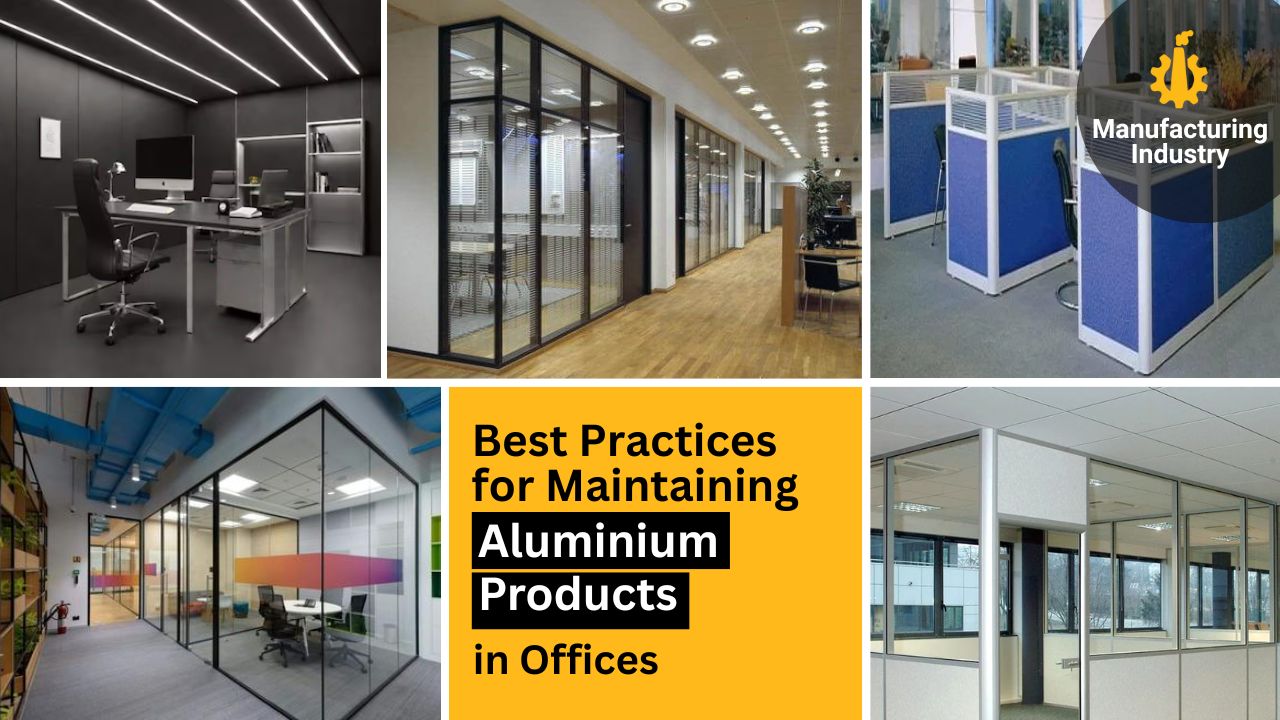
Aluminium has become the material of choice in modern office designs due to its lightweight qualities, durability, and sleek look. Aluminium combines extra functionality with aesthetics, whether it’s partitions, window frames, furniture, or anything else. However, to keep the aluminum products fresh as new and at their best performance, regular maintenance is required. There are some practices that need to be followed in order to keep the aluminium products in your office in top condition.
The following are some of the best practices for maintaining aluminium products in offices:
Cleaning is Important
Aluminium surfaces attract dust, dirt, and grime, which, if not cleaned periodically, can tarnish appearance and, more importantly, breed corrosion and damage. Dirt and grime can easily be removed from aluminium surfaces with a soft cloth or sponge moistened with warm soapy water (mild detergent). Please do not use abrasive cleaners or scouring pads, as these create scratches and dull the finish.
Tip: Do clean your aluminium products (including door handles, window frames, etc and the aluminium legs of furniture) at least once every week.
Don’t Use Harsh Chemicals
A number of chemical-based cleaners contain harmful agents like ammonia, bleach, or acids that can destroy the surface of aluminum. Read labels cautiously before application. Only use cleaners that are pH neutral or are aluminium safe, which ensures the prolonged protection of aluminium.
DIY cleaner: Equal parts of vinegar and water make an excellent, mild cleaner for aluminium surface cleaning.
Dry Immediately After Cleaning
After washing or wiping down the aluminium products, always dry them off with a soft, clean cloth. Water may stain the surface and, in rare cases, leave spots. The worst consequence of moisture sitting on the surface for an extended time will cause general oxidation or, worst of all, corrosion. This last point is most critical with windows and doors, where moisture residual will sit longer.
Check for Signs of Corrosion
Although aluminium has a natural resistance to rusting, it may corrode if exposed to environmental elements, particularly when anodized or painted. Be on the lookout for white, powdery deposits or discoloration—indicators of the beginning of oxidation. Once discovered, they can usually be cleaned with a specialized aluminum cleaner and sealed to prolong further damage.
Keep all Moving Parts Lubricated
The aluminium window frames, sliding doors, and drawer tracks may all incorporate moving parts liable to become worn or even stuck. A silicone-based lubricant should be applied once or twice a month on the hinges, tracks, and joints to keep the functioning of the parts smooth and extend the life of the product.
Setting Up Barrier Protection
Rubber or felt pads should be placed underneath aluminium furniture legs. This helps to avoid scratching both the furniture and the floors. Placing desk pads and coasters will help in protecting the aluminium desks or shelves from spills, dents, or stains.
Polishing for a Brilliant Shine
When the aluminium surface starts to lose its brilliance and shine, polishing the surface of your aluminium product brings it back again. Apply a non-abrasive aluminium polish and keep in mind the instructions written on the product. Always clean the surface in a circular motion, and finish by buffing with a microfiber cloth.
Professional Services
Regular professional inspection and maintenance are recommended for aluminium products such as curtain walls, partition setups, or storefront frame systems. The experts can establish any wear and tear, carry out repairs and treatments, and guarantee compliance with all safety and building regulations.
Staff Writer
Staff Writer at Manufacturing Industry
Conclusion
Aluminium products are really a perfect investment for any office, as they have a modern look and are long-lasting. Just by ensuring a little care and attention, they can remain looking new for many years and work efficiently. Following some off-the-shelf best practices in your office maintenance routine will enhance the aesthetics of your workplace and maintain the value and functionality of the aluminium products.